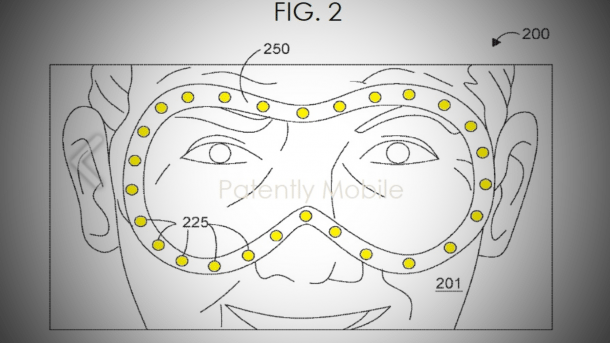For Quest: Meta wants to patent its own version of Apple's EyeSight
There is currently no screen on the outside of the Quest. Meta wants to change this and is taking inspiration from Apple.

Meta with EyeSight-like function, excerpt from patent application.
(Image: Meta / USPTO / via Patently Apple)
Meta has secured an invention from the European Patent Office (EPO) that may sound familiar to some Vision Pro users: A system for an "immersive reality headset" in which sensors ensure that a social presence can be displayed to the outside world. In practice, this means - and can also be seen in the images contained in the patent - that the Facebook parent company appears to be trying to protect its intellectual property rights to an EyeSight-like technology.
Patent filed in May
EyeSight is known to be the Vision Pro function that allows users to continue to be perceived as participants in the room even when wearing glasses. For this purpose, the face is scanned during setup using the Vision Pro's external sensors and a face and eye model is created. The eyes then appear on an external screen, which is not yet available on Meta's products such as the Quest 3. However, EyeSight has not been very popular so far, as the screen appears quite dark and pixelated - Apple has already made several software updates to improve this and is likely to continue to do so.
Nevertheless, Meta seems to be enthusiastic about the idea, judging by the patent with the number WO2024102264, which was first reported by the blog Patently Apple. The exact name is: "Embedded Sensors in Immersive Reality Headsets to enable Social Presence" and it was filed on May 18, several months after the Vision Pro was released in early February. In order to implement such a function, which Meta has not yet named, the Quest would have to be completely redesigned. There is currently no room for a display at the front, as this is where the sensors and cameras required for mixed reality mode (passthrough) are located.
Meta collects facial expressions
Meta describes its patent as a "method for updating a subject avatar with a facial expression collected in real time" - which is exactly what Apple does with EyeSight. According to the social media giant, the technique involves "receiving a signal from a sensor on a facial interface of a headset indicating a movement of a facial muscle of a user of the headset, determining a facial expression of the user with the signal from the sensor in the facial interface of the headset based on a machine learning algorithm trained to associate the facial expression with the movement of the facial muscle".
All of this is intended for "immersive reality" applications "hosted on a remote server" - i.e. in the cloud. At Apple, these services usually run on device - also for data protection reasons. As with all patents, they do not have to result in products. They are also registered for legal reasons. It also remains unclear whether Apple will file an opposition against Meta's idea. Apple itself has filed thousands of patents for the Vision Pro.
Empfohlener redaktioneller Inhalt
Mit Ihrer Zustimmmung wird hier ein externer Preisvergleich (heise Preisvergleich) geladen.
Ich bin damit einverstanden, dass mir externe Inhalte angezeigt werden. Damit können personenbezogene Daten an Drittplattformen (heise Preisvergleich) übermittelt werden. Mehr dazu in unserer Datenschutzerklärung.
(bsc)